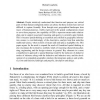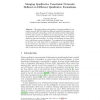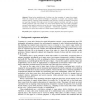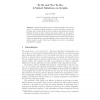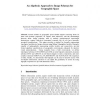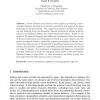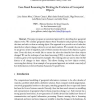125
click to vote
COSIT
2009
Springer
14 years 10 months ago
2009
Springer
People intuitively understand that function and purpose are critical parts of what human-configured entities are about, but these notions have proved difficult to capture formally....
98
Voted
COSIT
2009
Springer
15 years 4 months ago
2009
Springer
Abstract. This paper addresses the problem of merging qualitative constraint networks (QCNs) defined on different qualitative formalisms. Our model is restricted to formalisms wher...
85
Voted
COSIT
2009
Springer
15 years 5 months ago
2009
Springer
Named urban neighborhoods (localities) are often examples of vague place extents. These are compared with current knowledge of vagueness in concepts and categories within semantic ...
102
Voted
COSIT
2009
Springer
15 years 7 months ago
2009
Springer
Spatial information requires models which allow us to answer ‘maybe’ to questions asking whether a location lies within a region. At the same time, models must account for data...
91
Voted
COSIT
2009
Springer
15 years 7 months ago
2009
Springer
Human path planning relies on several more aspects than only geometric distance between two locations. These additional aspects mostly relate to the complexity of the traveled path...
94
Voted
COSIT
2009
Springer
15 years 7 months ago
2009
Springer
Formal models of geographic space should support reasoning about its static and dynamic properties, its objects, their behaviors, and the relationships between them. Image schemas,...
114
Voted
COSIT
2009
Springer
15 years 7 months ago
2009
Springer
Abstract. I review theories and research on the cognitive processing of environmental distance information by humans, particularly that acquired via direct experience in the enviro...
105
click to vote
COSIT
2009
Springer
15 years 7 months ago
2009
Springer
Movement patterns of individual entities at the geographic scale are becoming a prominent research focus in spatial sciences. One pertinent question is how cognitive and formal cha...
84
Voted
COSIT
2009
Springer
15 years 7 months ago
2009
Springer
Abstract.Abstract.Abstract. This paper proposes an automated approach for describing how geospatial objects evolve. We consider geospatial objects whose boundaries and properties c...
82
Voted
COSIT
2009
Springer
15 years 7 months ago
2009
Springer
Relation models have treated multi-holed regions relations either the same as hole-free regions relations, loosing this way the peculiarities of the holed topology, or with methods...
